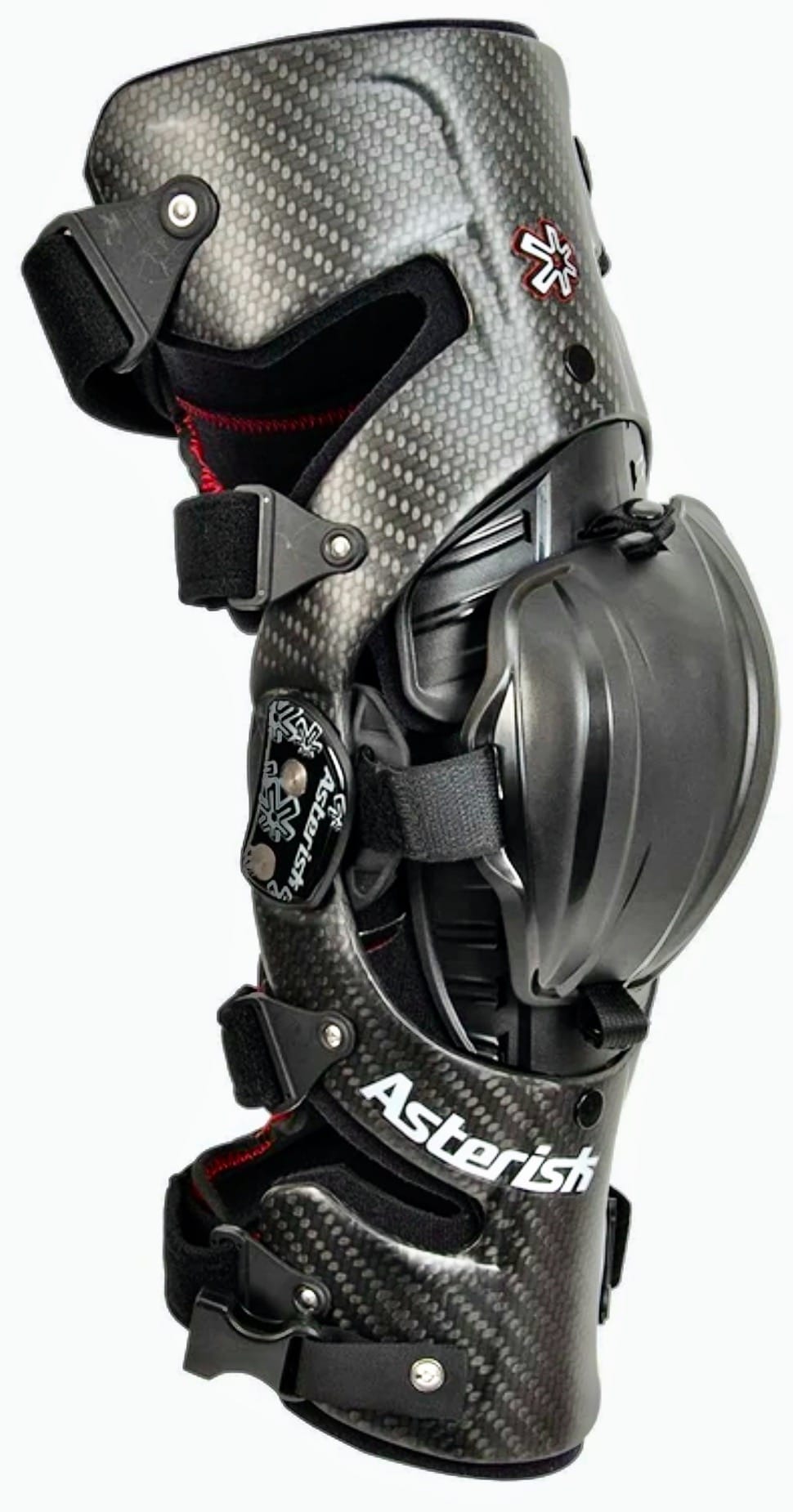MXA TEAM TESTED: ASTERISK CARBON CELL 1 KNEE BRACE
WHAT IS IT? Started by a group of athletes, including several motocross riders, Asterisk has been in the knee-brace game a long time. In 2017, not long after former AMA Pro Mike Beier and his team took over Asterisk, the wrecking crew started noticing a huge improvement in the durability of the Cell knee braces. The latest Asterisk Carbon Cell 1 (CC1) knee brace is manufactured from military- and aerospace-grade carbon fiber pre-preg. The Carbon Cell 1 is made in the United States to ensure the ultimate in build quality. Before launching the CC1, which is the slimmest brace MXA has ever tested, Asterisk spent two years designing, developing and testing the new brace. The test riders did their due diligence to help make the CC1 more durable while identifying areas that needed improvement. Asterisk paid close attention to the details of every element of its new brace.
WHAT’S IT COST? $799.95 (pair).
CONTACT? www.asterisk.com or (951) 268-6790.
WHAT STANDS OUT? Here’s a list of things that stand out with Asterisk’s Carbon Cell 1 knee brace.
(1) Durability. The Asterisk CC1 carbon fiber knee brace is far more durable than previous products. The MXA wrecking crew stress tested the CC1 brace over a five-month period with countless hours of in-the-saddle abuse dished out by our top-tier test riders. After 60 hours of heavy usage on the braces, we put some fresh extension stops in and moved strap number one (behind the calf) around in the strap clip because it was showing some wear.
(2) Knee cup. The patella cup is a three-piece design made from nylon 6 material that leaves no open gaps for that pesky handlebar to ding the top of your knee. The knee cup shape offers free movement with excellent flex and extension in current motocross pants, plus we didn’t feel it against our knee caps.
(3) Sizing. People often underestimate the importance of finding the right knee brace size. Wearing the incorrect-size knee brace will prevent the brace from being effective or, worse yet, may even increase your risk of injury. The Asterisk knee brace comes in a variety of sizes—from small to extra large. On Asterisk’s website, there is a sizing chart. Don’t skip this step before throwing down your cold hard plastic.
(4) Straps. The Asterisk CC1 features four Velcro-backed fastener straps. You also get knee sleeves and optional boot tethers. We didn’t use the boot tethers; however, they are proven to increase protection. These anti-rotation tethers are installed by drilling one small hole in the top of your boot. You then attach the tether to your boot and to the knee brace. This will help minimize rotational injuries to the leg by making the Asterisk brace and your leg move as one. With the four-strap system, you also have multiple ways to snug the straps for that custom feel. The neoprene pads are also adjustable to make the straps more comfortable. Asterisk’s website, under the “CC1 instructions,” details the proper strap tightening sequence for securing your brace. The Carbon Cell 1 is backed up by a one-year warranty from the date of purchase.
(5) Options. Asterisk braces have three different extension stops with 10, 20 and 30 degrees of motion to accommodate your personal preference. Asterisk also offers 2mm and 4mm condyle pads for correct knee width upon request. This year, Asterisk introduced Microcell kids’ braces for mini riders.
WHAT’S THE SQUAWK? The only squawk we had was that after washing the braces and leaving them out in the sun, the glue that holds the condyle pads in place deteriorated, allowing a pad to fall off. This was easy to fix with a little superglue.
MXA RATING: Ever since Mike Beier has taken over Asterisk, the entire line has improved in quality and durability. With the addition of the exceptional CC1 brace to Asterisk’s five-knee-brace lineup, the brand has been propelled to a whole new level. This is a compact, functional and durable knee brace.





Comments are closed.